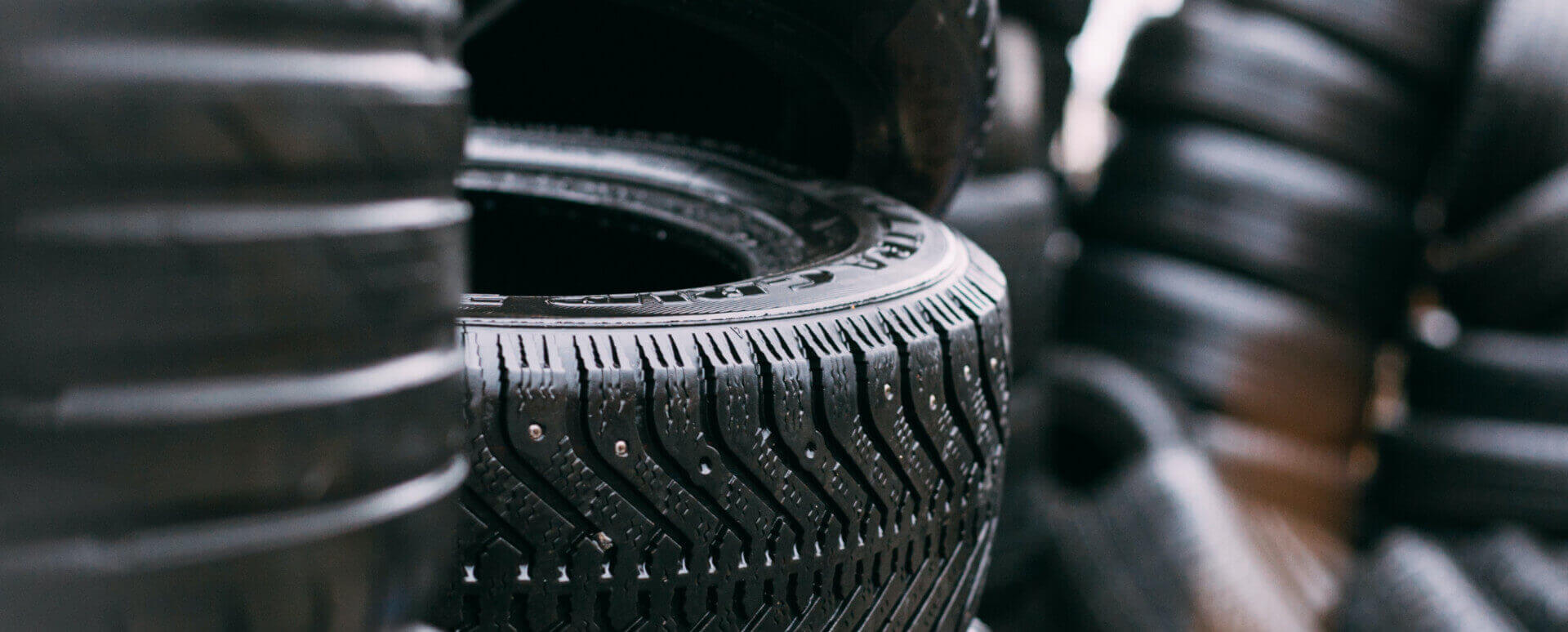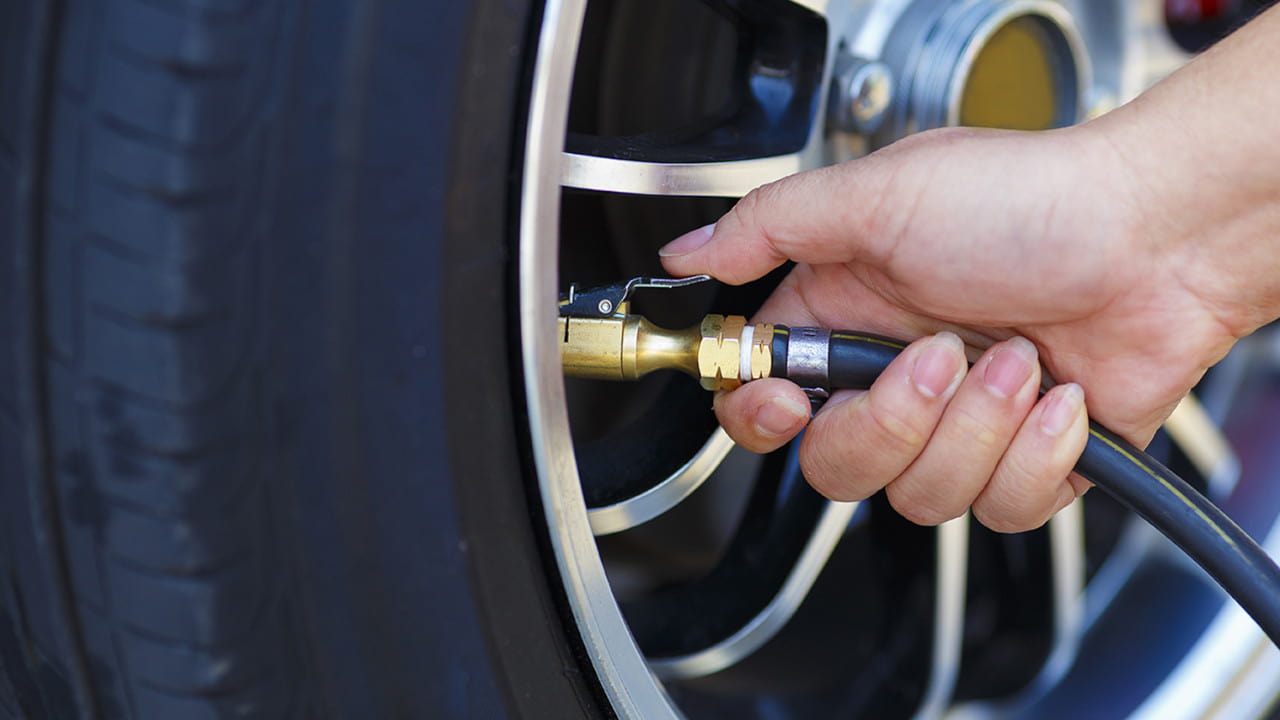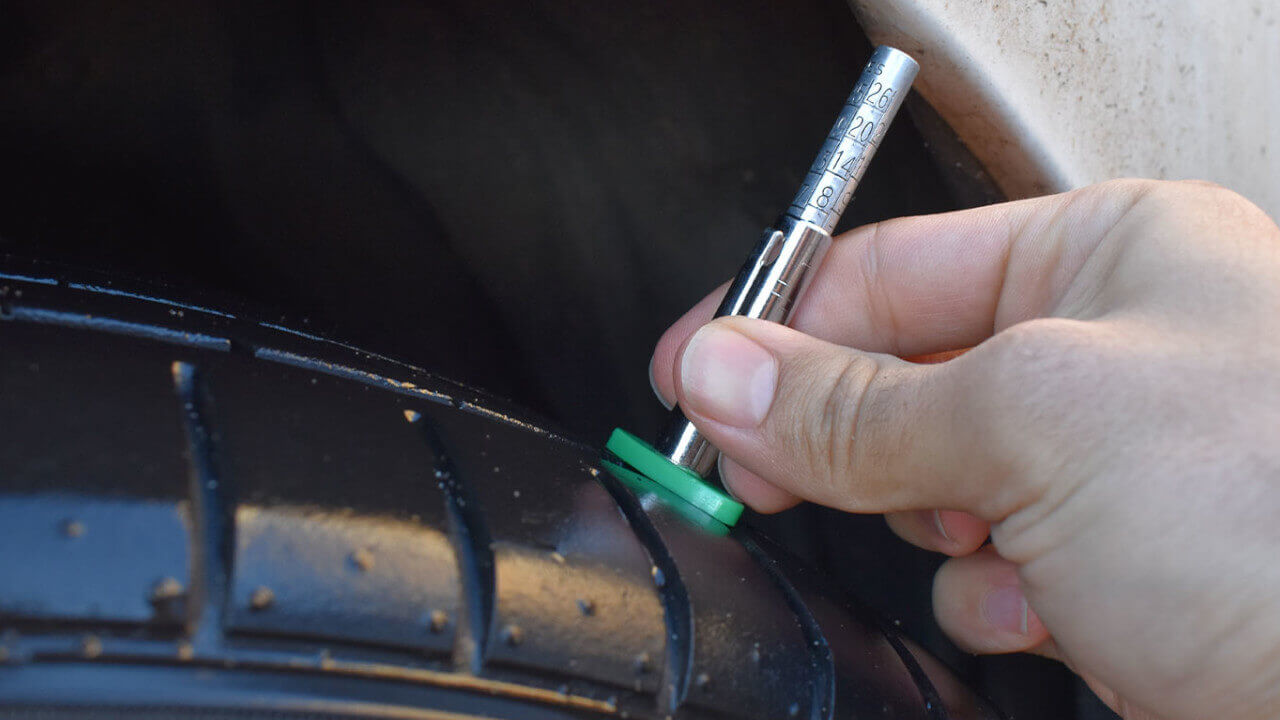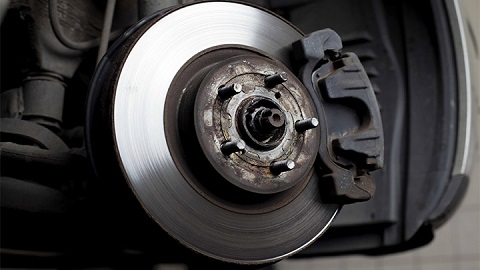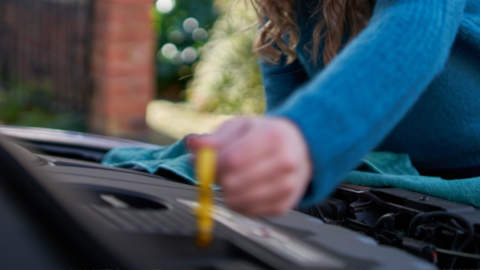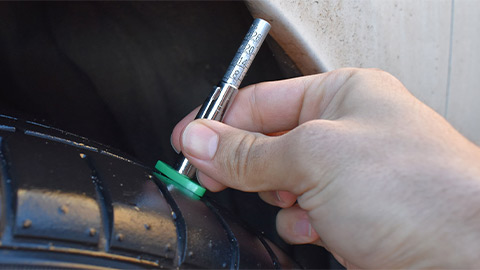Why it's important to regularly check your tyres
Keeping your tyres in top condition is a crucial part of driving, as they need to be up to the job of keeping you safe on the road. It's recommended that you check your tyres on a regular basis and before commencing long journeys.
By carrying out these checks, you can reduce your fuel bills, extend the life of your tyres, and ensure your vehicle can perform properly and safely.
It's also a legal requirement that your tyres are to a satisfactory standard. You could be fined up to £2,500 and receive three penalty points on your licence for each illegal or defective tyre.
- How to check tyre tread
- What pressure should my tyres be?
- How would under inflated tyres affect your vehicle?
- How would over inflated tyres impact your vehicle?
- How to put air in tyres
- When to change a tyre
- Frequently Asked Questions
How to check a tyre tread
- Turn your wheel so the tyre you're checking is pointing away from the car to have better access for doing the readings.
- The tread will need checking in several places along the width of the tyre, to test for uneven wear.
- Push the gauge softly against the indent of the tyre to get the reading. The depth must be at least 1.6mm across 75 percent of the tyre and around the circumference to be road legal, anything below that number is illegal, and you will need a new tyre fitting.
- Repeat this on all tyres and keep note of the tread depth on each tyre, so you can replace any that are not road legal and keep an eye on those that are close to the minimum.
What pressure should my tyres be?
To start with, you should check what the tyre pressure should be. You can usually find this in the vehicle handbook, and it will be measured in either BAR or PSI. There may also be a sticker with this information on the inside of the fuel tank flap or in the sill of the driver's or passenger's door. Pressures may also differ for the front and rear tyres depending on load weights.
The best time to check your tyre pressure is when the tyres are cold, and preferably if you've driven under two miles in the past few hours. To check the tyre pressure, follow these quick and easy steps that we've outlined below.
- Remove your dust cap and tighten the pressure gauge on. Note the pressure reading for the tyre and make sure to check whether the measurement is in BAR or PSI.
- Check the other three tyres using the same process and don't forget to check the spare tyre if you have one as this can get overlooked.
- If any of the pressures are too low, make sure you top them up to ensure your vehicle is safe.
How would under inflated tyres affect your vehicle?
Under inflated tyres can be really dangerous to drive with, so you should make sure to check your tyre pressures at least once a month to avoid these issues.
Uneven tyre wear
Driving with under inflated tyres can cause the sidewalls of the tyres to be misshapen, as the internal air pressure is too low to hold the tyre's correct shape. When the sidewalls then bulge out, the edges of the tyre get worn down more than the rest of the tyre.
So, not only does this lead to premature wear on the tyres, but if the tyre is left like this for too long, it can burst due to excess pressure on the areas where the rubber is thinner.
Poor fuel economy
When the tyres are under inflated, there's more contact with the road, which in turn means there's more friction that slows your car down.
As there's more friction, the engine needs to work harder to get to the same speed, resulting in more fuel being used.
Unresponsive steering
When the pressure is too low in the tyres, the rubber has more slack in it, which means the steering isn't as responsive as it should be; you may find that turning your steering wheel requires more effort as a result.
This makes it harder to control your car as your braking, manoeuvring, and cornering ability are all harder, increasing the risk of danger while driving.
How would over inflated tyres impact your vehicle?
We've explored under inflated tyres, but it's also important not to add too much air in your tyres too.
Over inflated tyres have less contact with the road, which affects handling and performance, giving you a bumpier ride. They are also more susceptible to damage.
Your tyres could get uneven wear, the same as when you under inflate your tyres, but the difference is that when they are over inflated, the part of the tyre that tends to wear down unevenly is the centre rather than the edges. Uneven wear on the tyres can also lead to poorer fuel economy, similar to when tyres are under inflated.
Over inflated tyres are also at a greater risk for a blowout. This can cause you to lose control of the car and endanger yourself and other drivers on the road.
How to put air in tyres
Follow these step-by-step instructions to easily put air in your tyres:
- Remove your dust cap and attach the inflator. On the end of the nozzle, there will be a locking latch or screw cap that will attach to the tyre.
- Inflate the tyre to the specified level by switching on the inflator. Make sure to check whether you are using BAR or PSI.
- When you're at the specified level, unlock or unscrew the cap and remove.
- Remember to put the dust cap back on the nozzle.
- Make sure to check all your tyres, including your spare, if you have one.
When to change a tyre?
Optimum safety and performance can be achieved when your tyres are in good condition, but if any of the following occur, you should look at getting the tyre changed.
- A punctured tyre
- Tyre tread of less than 3mm (1.6mm is the legal limit)
- Abnormally worn tyres
- A damaged tyre
- Wrong tyres for your vehicle
- Aged tyres
How to change a tyre
When it comes to actually changing the tyre, you can follow these steps below to get the job done. If you have a spare wheel, it's usually found under the boot lining or under the chassis of the car. You'll also need a car jack and a lug wrench, and these are typically found with your spare wheel.
- Find the car jack point, which should be solid metal and close to each of your wheel arches.
- Loosen the lugs whilst the tyre's still grounded and once they're loose, jack the car up.
- Once you have the tyre off the ground, remove the loosened lugs and put in a safe place.
- Pull the wheel away and put aside. Align the spare with the screws and tighten the lugs.
- Let the jack down until the tyre is on the ground, remove the jack and tighten the lugs.
- Place any coverings back on the wheel. If your wheel is a space saver, you can get this replaced with a full size tyre at your nearest Evans Halshaw dealership as soon as possible, as this will affect handling significantly.
Frequently Asked Questions
A tyre's tread depth needs to be above 1.6mm to be legal. Anything less than this and you could be fined up to £2,500 and receive three penalty points on your licence for each illegal tyre.
For most passenger cars, it's recommended that the PSI is between 31 and 35, but you should refer to your vehicle's handbook for the exact details.
You should get a minimum of 20,000 miles out of the front tyres on a front-wheel-drive car whereas rear tyres can get around double that, but this does all depend on driving style and conditions; these figures are for normal driving conditions and sensible driving. This is only a guide though, so you should still have regular tyre checks to ensure they remain safe and legal.
Still unsure on how to look after your tyres?
Making sure your tyres are to a satisfactory standard and legal for road use is not only essential for keeping the occupants of the vehicle safe, it can also result in improved fuel economy.
So don't get caught out, if you're unsure of the health of your tyres, book yourself in for a free vehicle health check at your nearest Evans Halshaw dealership.

